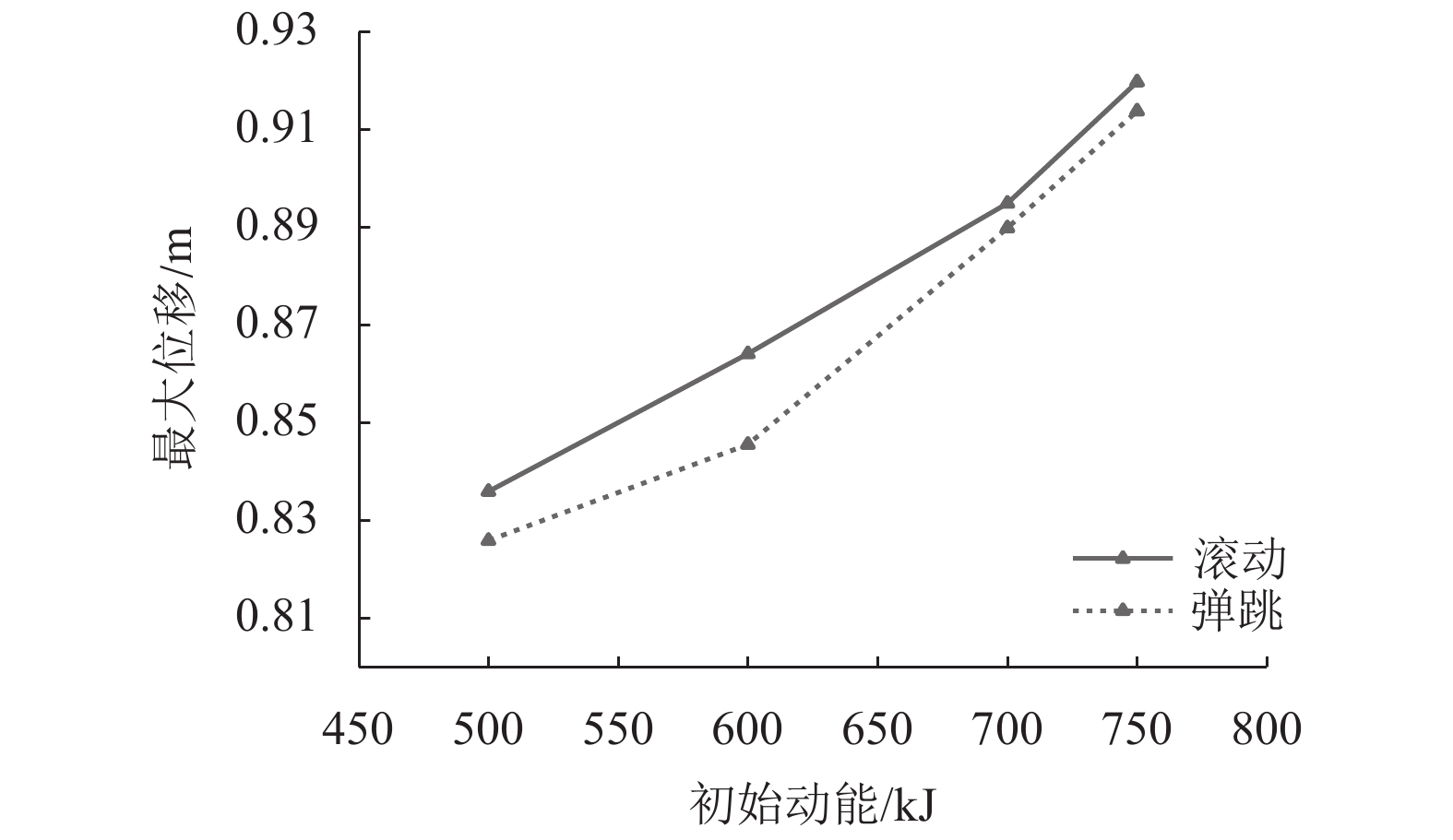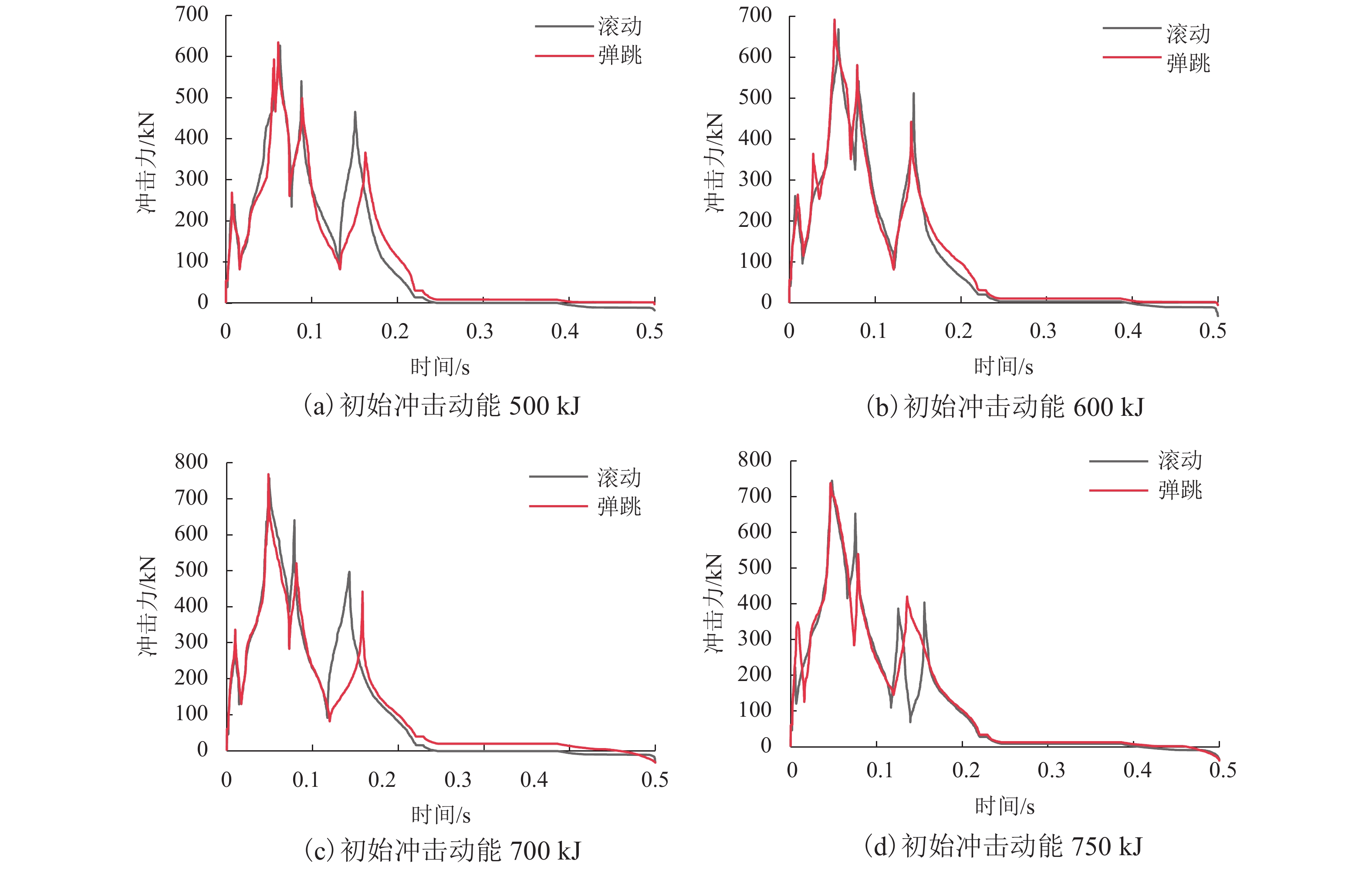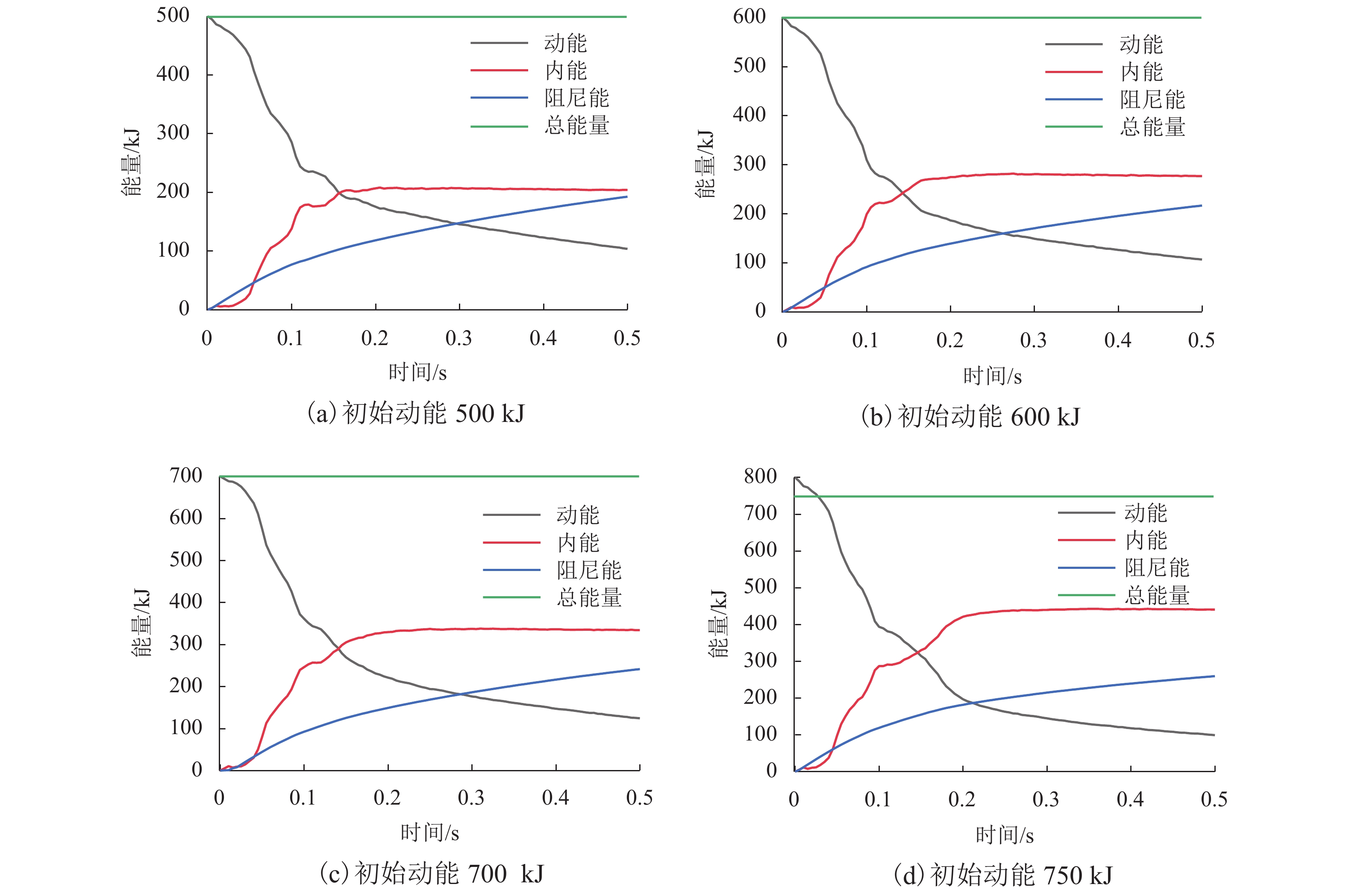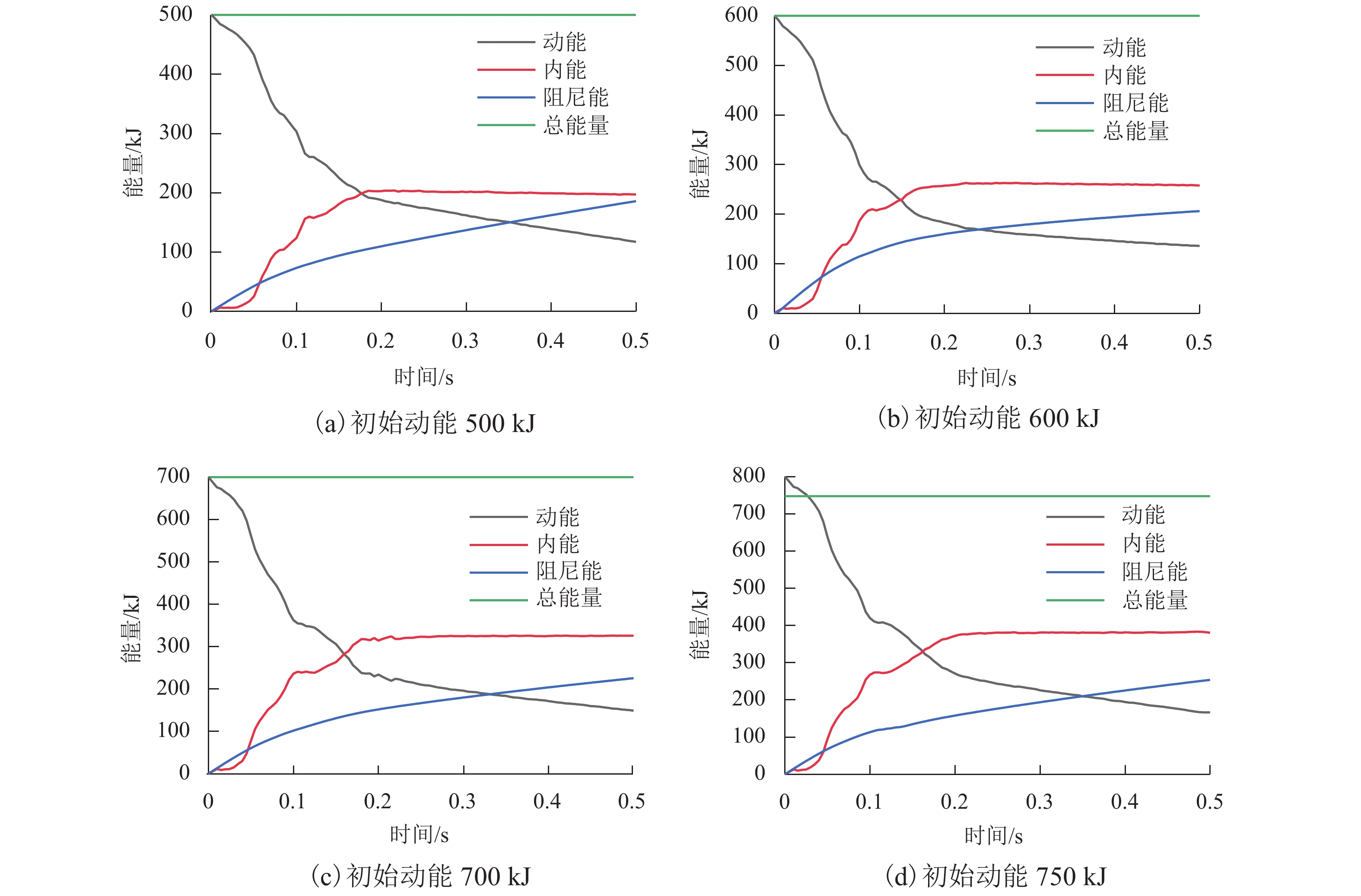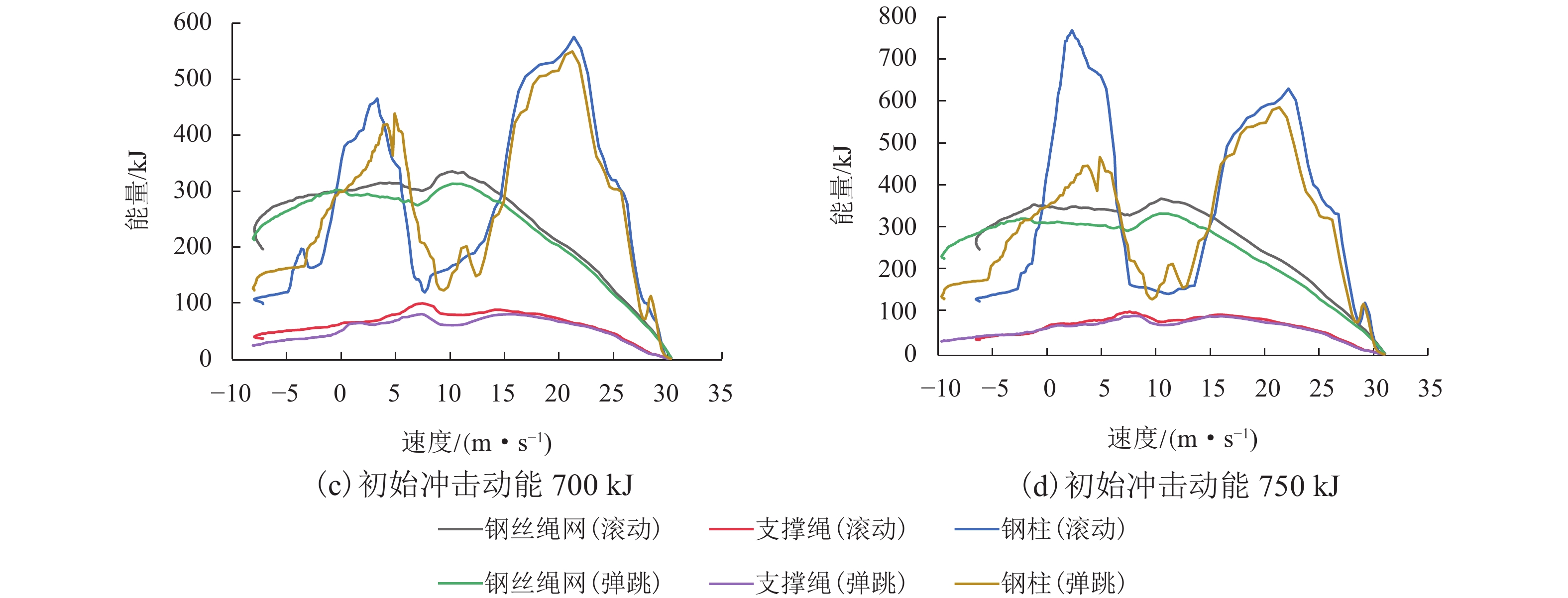Dynamic Response Analysis of Passive Flexible Protection System under Impact of Rockfalls
-
摘要: 应用有限元分析软件ANSYS/LS-DYNA对被动柔性防护体系在落石冲击作用下的变形和能量进行研究,采用ANSYS/LS-DYNA的显式分析方法,模拟了多块落石在不同运动模式下,其冲击荷载对被动柔性防护体系的动力响应,根据时程曲线,对比分析了多块落石在不同运动模式下的位移、冲击力、能量变化规律. 分析结果表明:随着落石初始冲击动能的增加,防护网达到最大位移所需时间总体呈现减少趋势,且冲击时间在0.11~0.14 s之间;落石的最大冲击荷载出现在0.04~0.07 s,且随初始动能增加逐渐增大;在落石冲击过程中,被动柔性防护结构发生能量耗散,其中钢丝绳网在落石为滚动状态下的能量大于落石为弹跳状态下的能量,且钢柱在落石为滚动状态下的最大峰值能量大于落石在弹跳状态下的最大峰值能量;在钢丝绳网被冲破时落石在滚动状态下钢柱的能量发生急剧增大.Abstract: Finite element program ANSYS/LS-DYNA was applied to study the deformation and energy of passive flexible protection system under rockfalls impact. Using the ANSYS/LS-DYNA explicit analysis, dynamic responses of the passive flexible protection system to impact loads of rockfalls in different motion modes were simulated. According to the time history curves, the displacements, impact forces and energy change of rockfalls in different motion modes were contrasted. Results show that as the initial impact kinetic energy of rockfalls increases, the time required for the protective net to reach the maximum displacement decreases generally, and the impact time is between 0.11 s and 0.14 s. The maximum impact load of rockfalls occur at around 0.04−0.07 s, and increases with an increase in the initial kinetic energy. In the process of rockfall impact, energy dissipation occurs in the passive flexible protective structure, and the energy of steel wire mesh under rolling rocks is greater than that under bouncing rocks. Besides, the maximum peak energy of steel posts under rocks in the rolling state is greater than its counterpart under rocks in the bouncing state; the energy of steel posts increases sharply at the moment the steel wire mesh is broken under the impact of rolling rocks.
-
Key words:
- protection system /
- explicit analysis /
- impact loads /
- dynamic response
-
表 1 有限元模型中的材料特性
Table 1. Material characteristics in finite element models
材料 弹性模
量/GPa密度/
(kg•m−3)泊松比 屈服强
度/MPa落石 33 2 840 0.3 钢丝绳、支撑绳、拉锚绳 177 7 850 0.3 1 780 钢柱 206 7 850 0.3 235 表 2 防护网达到最大位移所需时间
Table 2. Time required for the protective net to reach maximum displacement
s 初始动能/kJ 运动模式 滚动 弹跳 500 0.132 0.133 600 0.123 0.122 700 0.117 0.120 750 0.117 0.120 表 3 冲击速度与防护系统变形情况
Table 3. Relationship between impact velocity and deformation of protection system
冲击速度 变形情况 接近初始值 仅接触点附近发生网片滑移 下降值接近 10 m/s 钢柱发生明显摆动 接近 10 m/s 防护网与中间落石开始分离 接近 0 落石开始反弹 -
刘成清,陈林雅,陈驰,等. 落石冲击作用下被动柔性防护网整体结构试验[J]. 中国地质灾害与防治学报,2014,25(4): 37-44.LIU Chengqing, CHEN Linya, CHEN Chi, et al. Integral structure test of passive flexible protective net under rockfall impact[J]. Chinese Journal of Geological Hazards and Prevention, 2014, 25(4): 37-44. YU Z X, ZHAO L, LIU Y P, et al. Studies on flexible rockfall barriers for failure modes,mechanisms and design strategies:a case study of western China[J]. Landslides, 2019, 16(2): 347-362. doi: 10.1007/s10346-018-1093-y CHEUNG A K C, YIU J, LAM H W K, et al. Advanced numerical analysis of landslide debris mobility and barrier interaction[J]. HKIE Transactions, 2018, 25(2): 76-89. doi: 10.1080/1023697X.2018.1462106 夏春兰. 被动柔性防护网在泥石流灾害治理中的应用研究[D]. 成都: 西南交通大学, 2017. WENDELER C, VOLKWEIN A, MCARDELL B W, et al. Load model for designing flexible steel barriers for debris flow mitigation[J]. Canadian Geotechnical Journal, 2019, 56(6): 893-910. doi: 10.1139/cgj-2016-0157 SONG D, CHOI C E, ZHOU G G D. Geophysical flows impacting a flexible barrier:effects of solid-fluid interaction[J]. Landslides, 2017, 15(1): 99-110. ASHWOOD W., HUNGR O. Estimating total resisting force in flexible barrier impacted by a granular avalanche using physical and numerical modeling[J]. Canadian Geotechnical Journal, 2016, 53(10): 1700-1717. doi: 10.1139/cgj-2015-0481 FERRERO A M, SEGALINI A, UMILI G. Experimental tests for the application of an analytical model for flexible debris flow barrier design[J]. Engineering Geology, 2015, 185: 33-42. doi: 10.1016/j.enggeo.2014.12.002 SEGALINI A, BRIGHENTI R, UMILI G. A simplified analytical model for the design of flexible barriers against debris flows[C]//Landslide Science for a Safer Geoenvironment. [S.l.]: Springer International Publishing, 2014: 725730 ALBRECHT V B, VOLKWEIN A. Numerical modelling of chain-link steel wire nets with discrete elements[J]. Canadian Geotechnical Journal, 2019, 56(3): 398-419. 郭立平, 余志祥, 骆立茹, 等. 基于力流等效的环形网顶破力学行为解析方法[J]. 工程力学, 2019, 30(1): 1-12.GUO Liping, YU Zhixiang, LUO Liru, et al. An analytical method of puncture mechanical behavior of ring nets based on load path equivalent[J]. Engineering Mechanics, 2019, 30(1): 1-12. SONG D, ZHOU G G D, XU M, et al. Quantitative analysis of debris-flow flexible barrier capacity from momentum and energy perspectives[J]. Engineering Geology, 2019, 251: 893-910. TAN D Y, YIN J H, QIN J Q, et al. Large-scale physical modeling study on the interaction between rockfall and flexible barrier[J]. Landslides, 2018, 15(12): 2487-2497. doi: 10.1007/s10346-018-1058-1 KOO R C H, KWAN J S H, LAM C, et al. Dynamic response of flexible rockfall barriers under different loading geometries[J]. Landslides, 2016, 14(3): 905-916. 齐欣, 赵世春, 韦韬, 等. 防落石冲击柔性被动拦截网试验与数值分析[J]. 土木工程学报, 2014, 47(增刊2): 62-68.QI Xin, ZHAO Shichun, WEI Tao, et al. Test study and numerical analysis of flexible protective structure for falling rocks[J]. Journal of Civil Engineering, 2014, 47(S2): 62-68. 齐欣,余志祥,许浒,等. 被动柔性防护网结构的累计抗冲击性能研究[J]. 岩石力学与工程学报,2017,36(11): 2788-2797.QI Xin, YU Zhixiang, XU Hu, et al. Study on the cumulative impact resistance of passive flexible protective net structure[J]. Chinese Journal of Rock Mechanics and Engineering, 2017, 36(11): 2788-2797. 中华人民共和国交通部. 公路边坡柔性防护系统构件: JT/T 528—2004[S]. 北京: 人民交通出版社, 2004. 国家铁路局. 铁路边坡柔性被动防护产品落石冲击试验方法与评价: TB/T3449—2016[S]. 北京, 中国铁道出版社, 2016. R. 克拉夫, J. 彭津. 结构动力学[M]. 2版. 北京: 高等教育出版社, 2006: 9-94 陈驰. 被动柔性防护网中减压环的力学性能及耗能作用研究[D]. 成都: 西南交通大学, 2015. 叶四桥,陈洪凯,许江. 落石运动模式与运动特征现场试验研究[J]. 土木建筑与环境工程,2011,33(2): 18-23,44.YE Siqiao, CHEN Hongkai, XU Jiang. Field experimental study on the motion pattern and characteristics of rockfall[J]. Civil Architecture and Environmental Engineering, 2011, 33(2): 18-23,44. -




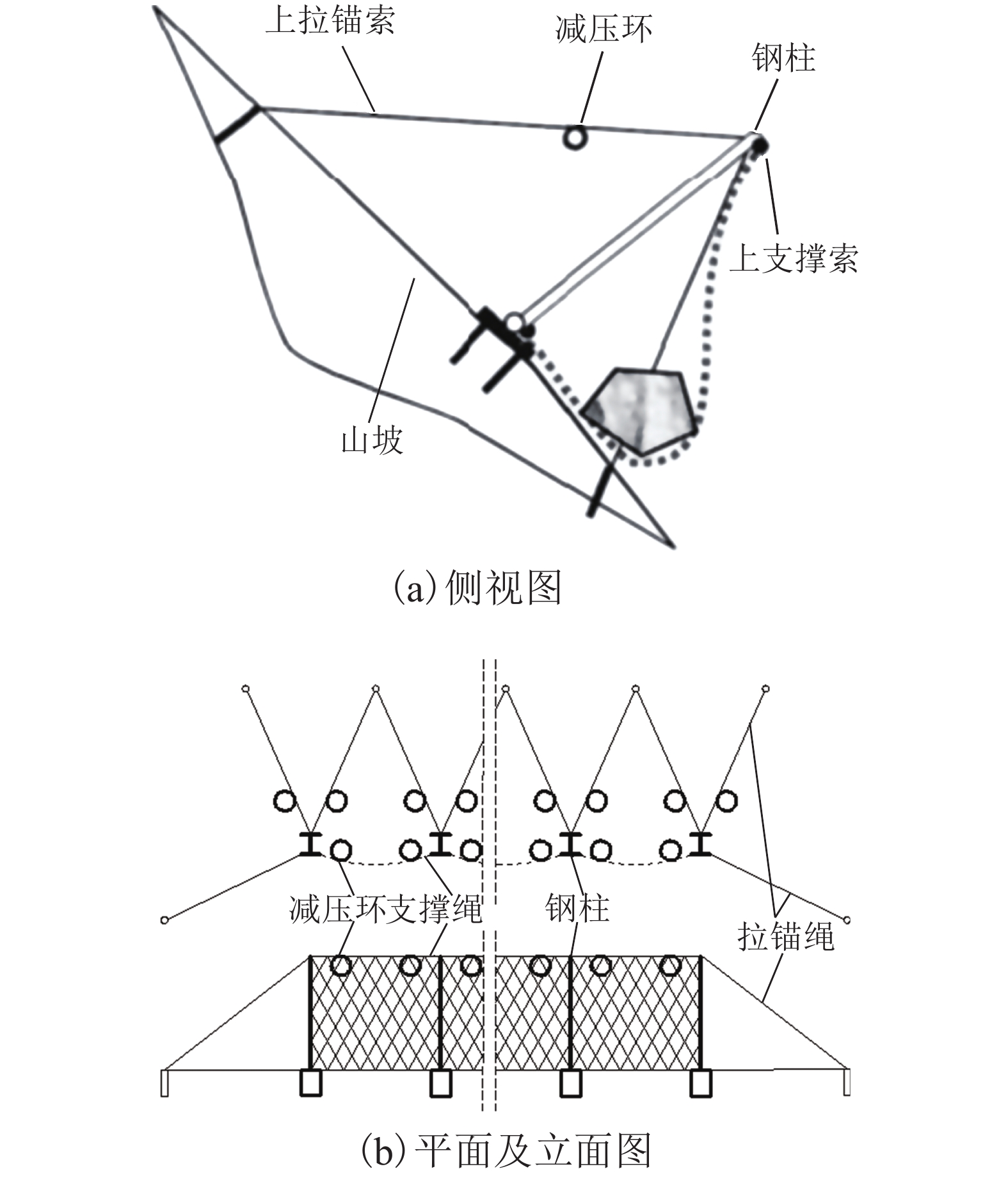
 下载:
下载:



